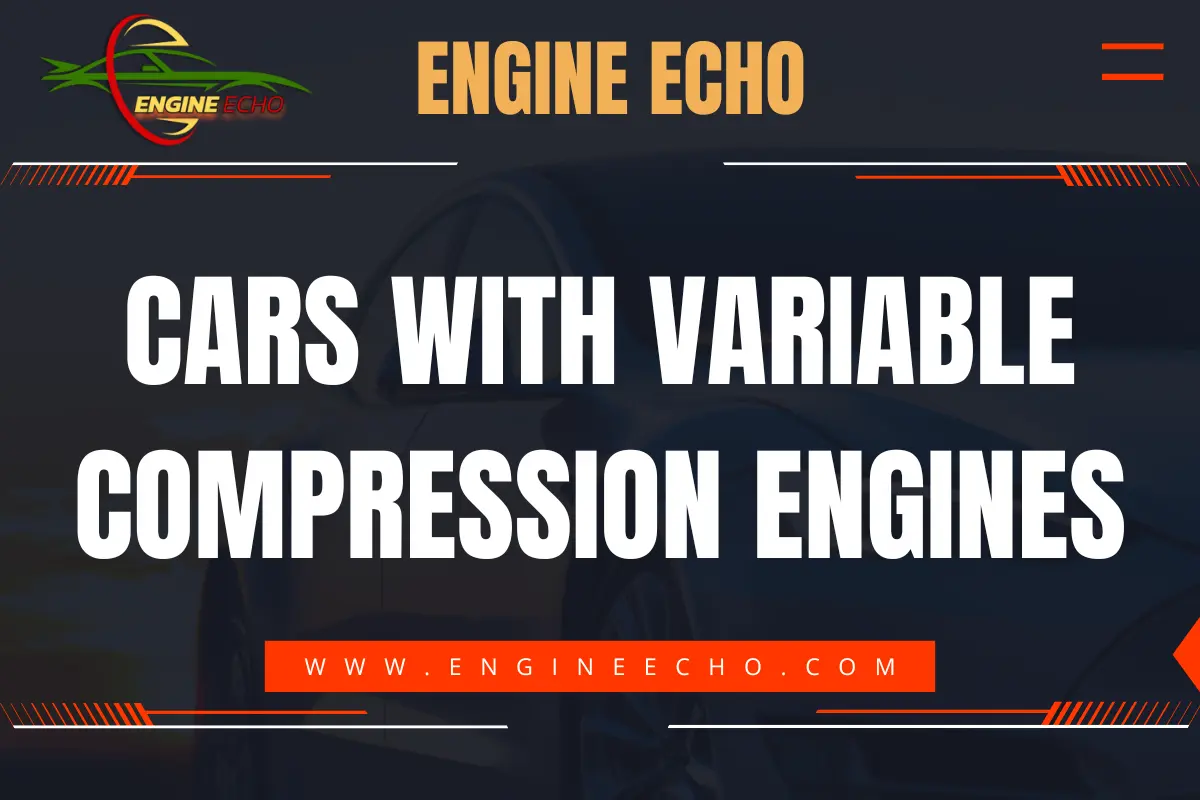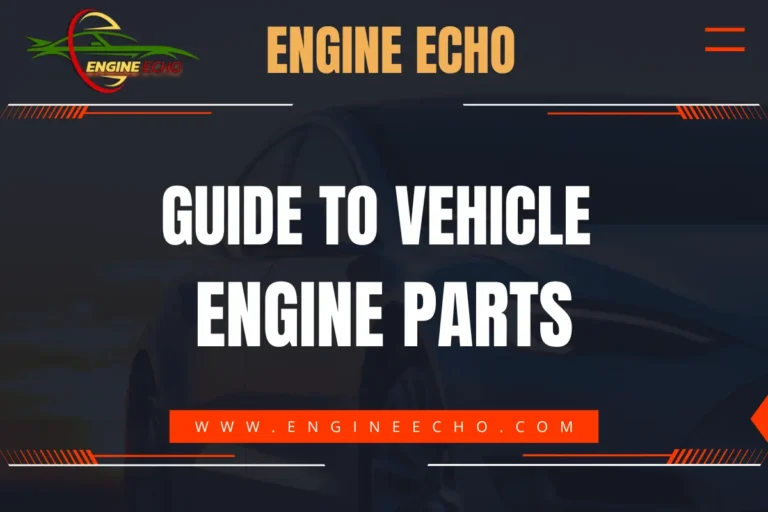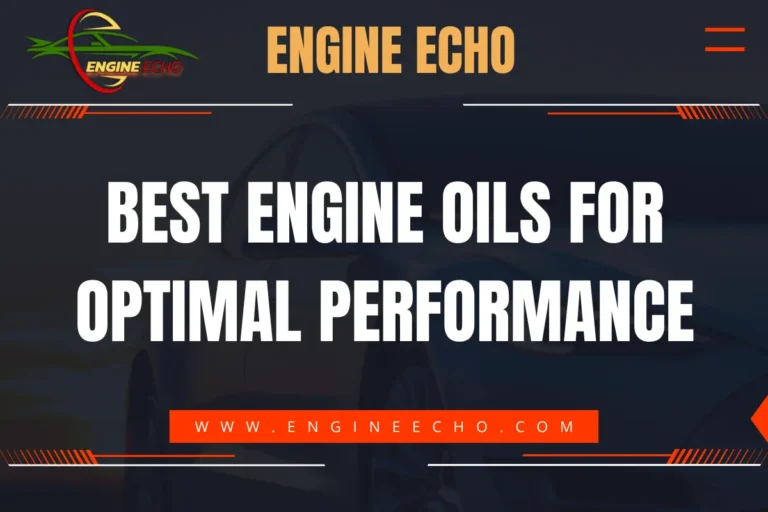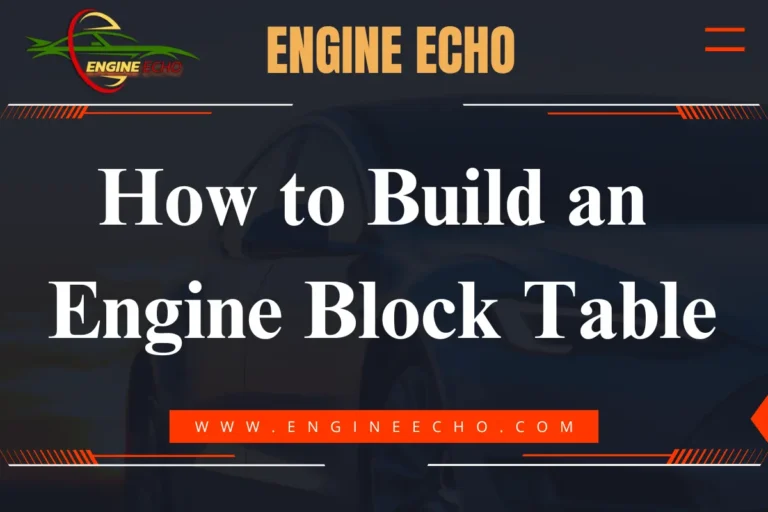Cars with Variable Compression Engines

Key Takeaways
- Fuel Efficiency That Adapts: One of the coolest things about VCEs is how they can tweak the compression ratio depending on your driving, which means better fuel efficiency without you even noticing.
- Optimized Performance: VCEs are all about giving you the best of both worlds—smooth, powerful drives when you need them and efficient cruising when you don’t.
- Eco-Friendly Tech: By optimizing how they burn fuel, VCEs help lower emissions, making them a win for both your wallet and the environment.
- On the Road Now: This isn’t just a futuristic idea—manufacturers like Nissan are already rolling out VCEs in models you can buy today.
- What’s Next: The future looks bright for VCEs, with potential new developments that could see them paired with hybrid or electric systems, taking efficiency to the next level.
Introduction to Variable Compression Engines
I’ve always been fascinated by how far we can push automotive engineering, and variable compression engines (VCEs) are a prime example of this. Imagine driving a car that intuitively adjusts its performance and efficiency as you go, giving you the best possible experience every time. That’s the promise of VCEs—a technology that I believe could really shake things up in the auto world.
For those of us who love driving but also care about the environment, VCEs offer a compelling solution. They make it possible to enjoy the thrill of the ride without the usual trade-offs in fuel economy. This article is my take on why VCEs matter, how they work, and why you might want to keep an eye on this exciting development.
History and Development of Variable Compression Engines
Early Concepts and Prototypes
While variable compression engines might seem like a new trend, they’ve actually been in the works for decades—think of it like a long-time-coming evolution in engine design. The idea has been around for a while, but turning that idea into a reliable, everyday technology took a lot of trial and error.
Key Milestones in Development
Fast forward to today, and the breakthroughs have been significant. Advances in electronic control systems and engine materials have allowed manufacturers like Nissan to finally make VCEs a reality. Watching this unfold has been fascinating—seeing theory evolve into something you can actually drive.
Transition from Theory to Application
When Nissan introduced the VC-Turbo engine, it felt like a new era was beginning. I was genuinely excited when I first heard about it—it was like witnessing a long-awaited dream come true. Seeing this technology in action, especially in the Infiniti QX50, really brought home how far we’ve come.
How Variable Compression Engines Work
Basic Principles
The magic of VCEs is all in how they can adjust the compression ratio in real-time, right in the heart of the engine. This dynamic adjustment is what makes VCEs stand out—they can optimize both fuel efficiency and performance depending on what you need at the moment.
Components Involved
At the core of this innovation is a multi-link system that adjusts the piston’s position and an advanced control unit that keeps everything running smoothly. It’s pretty amazing to think about how this system delivers peak performance, no matter where or how you’re driving.
Comparison with Traditional Engines
Traditional engines lock you into a single compression ratio, meaning you’re always compromising between power and efficiency. VCEs, on the other hand, give you the best of both worlds. It’s like having an engine that knows exactly what you need and adapts on the fly—that’s a huge leap forward in my book.
Advantages of Variable Compression Engines
Improved Fuel Efficiency
Let’s face it—fuel efficiency is something we all think about, especially with gas prices what they are. One of the biggest perks of VCEs is how they help you get more miles per gallon without you having to do a thing. They just adjust and optimize as you drive.
Enhanced Performance
What’s awesome about VCEs is that they’re not just about saving on gas—they actually give you a better driving experience too. I’ve driven cars where you can feel the engine struggling to balance power and economy, and it’s not always a smooth ride. With VCEs, that balance is seamless, making every drive feel just right.
Environmental Benefits
As someone who’s passionate about reducing our environmental impact, the environmental benefits of VCEs are particularly compelling. By using less fuel, these engines emit less CO2, helping to mitigate climate change. This is a technology I genuinely believe can make a difference.
Adaptability to Different Driving Conditions
VCEs are incredibly adaptable, adjusting to whatever driving conditions you throw at them. Whether you’re in stop-and-go traffic or on a long highway drive, the engine optimizes itself to perform at its best. This kind of adaptability is something I’ve always valued in a car, and VCEs deliver it in spades.
Challenges and Limitations
Technical Complexity
But, let’s be honest, VCEs aren’t without their challenges—these engines are seriously complex. The systems that make them work are intricate, which means there’s more that can go wrong. A mechanic friend of mine once said, “The more moving parts, the more potential for something to break,” and that’s definitely something to keep in mind here.
Cost Implications
This complexity doesn’t come cheap, either. When I first looked into getting a car with a VCE, the price tag gave me pause. While I think the benefits justify the cost, it’s definitely something you’ll want to consider if you’re thinking about making the switch.
Reliability Concerns
And then there’s the question of reliability. With any new technology, there’s always a learning curve, and early adopters often bear the brunt of it. I’ve seen some mixed reviews about how these engines hold up over time, so it’s something to watch if you’re considering one.
Market Adoption Barriers
Finally, market adoption is a hurdle. Despite the clear advantages, many consumers are still unfamiliar with VCEs. I’ve noticed that people tend to stick with what they know, and convincing them to try something new—especially when it’s more expensive—can be tough.
Current Cars Equipped with Variable Compression Engines
Overview of Major Manufacturers
Right now, if you’re looking for a car with this cutting-edge tech, Nissan’s got you covered—they’re really leading the charge with their VC-Turbo engines. They’ve done an impressive job bringing VCEs to market, and it’s exciting to think about what’s next.
Models Featuring the Technology
The Infiniti QX50 was the first to feature a VCE, and it’s a model I highly recommend if you’re curious about this technology. I had the chance to drive one, and the experience was nothing short of impressive. The engine’s ability to adapt to different driving conditions made it feel like I was driving two cars in one.
Market Availability and Popularity
While the Infiniti QX50 has gained some traction, VCEs are still relatively rare. However, I believe that as more manufacturers get on board, we’ll see wider availability. If you’re interested in cutting-edge automotive technology, now might be the perfect time to explore these engines before they become mainstream.
Case Study: Nissan’s VC-Turbo Engine
Development Background
Nissan’s VC-Turbo engine didn’t happen overnight—it’s the result of years of dedicated research and development. I’ve always admired Nissan for their commitment to innovation, and this engine is a testament to their forward-thinking approach.
Technical Specifications
The engine can adjust its compression ratio between 8:1 (for high performance) and 14:1 (for high efficiency). This flexibility allows it to deliver both power and efficiency, depending on what you need at the moment. It’s this kind of versatility that I believe will make VCEs a staple in future vehicles.
Performance Reviews and Real-World Application
The reviews I’ve seen, and my own experience with the Infiniti QX50, have been overwhelmingly positive. The engine’s ability to transition between different compression ratios is smooth, and it really does deliver on its promise of both power and efficiency. If you’re looking for a car that offers something different, the VC-Turbo is worth considering.
Future of Variable Compression Engines
Potential Innovations and Improvements
Looking ahead, I’m excited about the potential innovations in VCE technology. As manufacturers continue to refine these engines, I expect we’ll see even greater efficiency and perhaps lower costs. This is an area I’ll be watching closely.
Integration with Hybrid and Electric Powertrains
One of the most intriguing possibilities is the integration of VCEs with hybrid and electric powertrains. Combining VCEs with electric motors could create some of the most efficient and versatile vehicles on the road. I’m optimistic that this could be a major development in the next decade.
Predicted Market Trends
As more consumers become aware of the benefits of VCEs, I predict we’ll see a shift in market dynamics. People are increasingly looking for vehicles that are both powerful and efficient, and VCEs offer just that. It’s an exciting time to be following automotive technology, and I can’t wait to see where this goes.
Impact on the Automotive Industry
Influence on Engine Design and Manufacturing
VCEs are already starting to influence engine design and manufacturing. I believe we’ll see more manufacturers adopting similar technologies, which could lead to a new standard in engine design. This could be the start of a major shift in how we think about internal combustion engines.
Shifts in Market Dynamics
The introduction of VCEs could also shift market dynamics, particularly in the luxury and performance segments. Manufacturers that successfully integrate VCE technology will likely attract a new wave of consumers looking for the best of both worlds—performance and efficiency.
Competitive Landscape Analysis
As more companies enter the VCE space, the competitive landscape will evolve. I’m curious to see how traditional engine manufacturers respond to this challenge—will they innovate, or will they be left behind? Either way, it’s going to be fascinating to watch.
Environmental Impact and Sustainability
Contribution to Lowering Emissions
From an environmental perspective, VCEs are a big win. By improving fuel efficiency, they help reduce emissions, which is something I care deeply about. It’s reassuring to know that advancements like these are helping to mitigate our impact on the planet.
Role in Meeting Environmental Regulations
VCEs also play a crucial role in helping manufacturers meet increasingly strict environmental regulations. As someone who’s always advocated for more sustainable solutions, I see this as a positive step forward. It’s encouraging to see that we can have powerful cars that are also environmentally friendly.
Comparison with Alternative Technologies
When compared to alternative technologies like electric and hybrid engines, VCEs hold their own by offering a unique blend of efficiency and performance. While they might not completely replace these technologies, I believe they offer a complementary solution that enhances the overall driving experience.
Consumer Perception and Adoption
Public Awareness and Understanding
One challenge I’ve noticed is that many people simply don’t know what VCEs are. There’s a learning curve here, and it’s going to take some time for the general public to catch on. But I’m confident that as more people experience these engines firsthand, they’ll start to see the benefits.
Influence of Marketing Strategies
Manufacturers will need to develop smart marketing strategies to highlight the advantages of VCEs. I’ve already seen some campaigns that do a great job of explaining the technology in simple terms, and I think that’s the key to increasing adoption. If people understand what they’re getting, they’re more likely to be interested.
Adoption Rates and Consumer Feedback
As more vehicles with VCEs hit the market, I expect adoption rates to rise. Early feedback from consumers has been positive, particularly when it comes to the balance of performance and efficiency. If you’re in the market for a new car, I’d recommend considering a model with a VCE—you might be surprised at how much you like it.
Variable Compression Engines vs. Emerging Engine Technologies
Comparison with Hybrid, Electric, and Hydrogen Engines
VCEs offer a different set of advantages compared to hybrid, electric, and hydrogen engines. While hybrids and electrics are known for their efficiency, VCEs provide a more traditional combustion engine experience with enhanced adaptability. I see them as a bridge between the old and the new, combining the best aspects of both.
Advantages and Disadvantages
The primary advantage of VCEs is their ability to deliver both high efficiency and high performance. However, their complexity and cost are notable disadvantages. Compared to the simplicity of electric engines, VCEs might seem daunting, but for those who love the driving experience of a combustion engine, they’re a compelling option.
Long-Term Viability in a Shifting Market
Looking ahead, I think the long-term viability of VCEs will depend on how well they can be integrated with other emerging technologies. If costs can be reduced and reliability improved, I see a bright future for these engines in a market that’s increasingly focused on sustainability.
Conclusion
Honestly, I’m super excited about what VCEs bring to the table in today’s automotive world. They offer a unique combination of efficiency and performance that’s hard to find elsewhere. As we move toward a future that demands more sustainable solutions, I believe VCEs will play a critical role in bridging the gap between traditional combustion engines and the innovations of tomorrow. If you’re passionate about driving and care about the environment, I highly recommend considering a car with a VCE. It’s a small step toward a greener future, without compromising the thrill of the ride.
Frequently Asked Questions (FAQs)
1. What is a variable compression engine? A variable compression engine is a type of internal combustion engine that can adjust its compression ratio dynamically, optimizing performance and efficiency based on driving conditions.
2. What are the benefits of variable compression engines? The primary benefits include improved fuel efficiency, enhanced performance, and reduced emissions, making them a promising technology for the future of automotive design.
3. Which cars currently use variable compression engines? Nissan’s VC-Turbo engine, featured in models like the Infiniti QX50, is a notable example of a car using variable compression technology.
4. Are variable compression engines more expensive? Yes, due to their complexity and the advanced technology required, variable compression engines are generally more expensive to produce and maintain than traditional engines.
5. Will variable compression engines replace traditional engines? While they offer significant advantages, variable compression engines are likely to complement rather than completely replace traditional engines, particularly as the automotive industry moves toward hybrid and electric powertrains.
Thanks for checking out this article on EngineEcho.com! Hope you found this article: "Cars with Variable Compression Engines" helpful! If you liked it and want to dive into more car engine topics, head over to our homepage. There's always something new to discover in the world of engines. Enjoy your reading journey!
Check out our previous article: Cars with Big Block Engines






